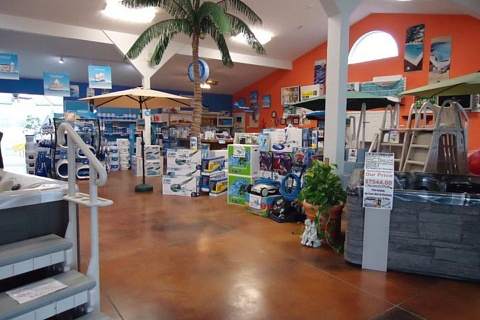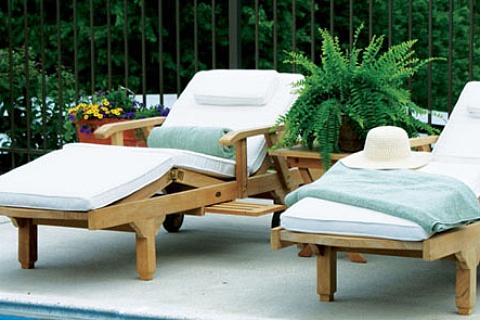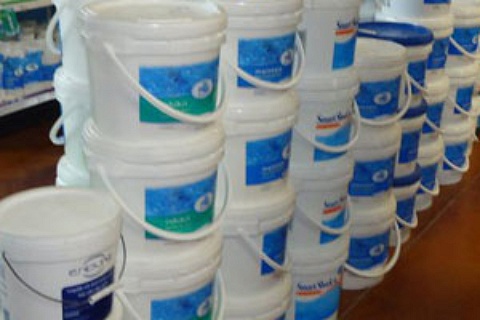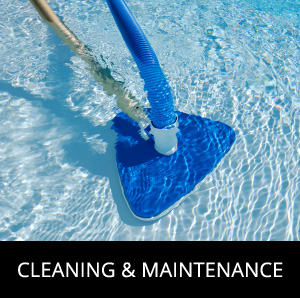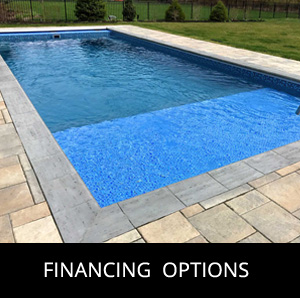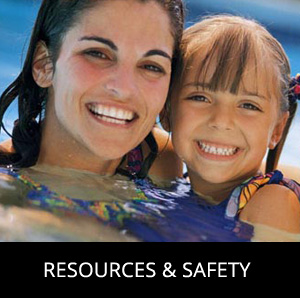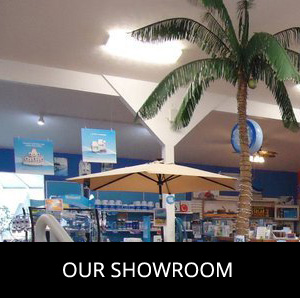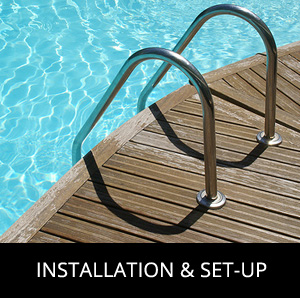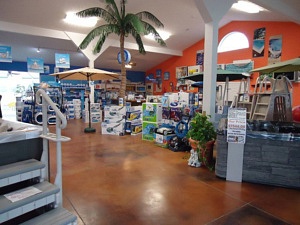Here are some pool safety reminders to help prevent accidents and to keep your family and friends safe.
Supervision
- Adult supervision is a key element in getting the maximum, safest enjoyment from your pool. Never let children under the age of 14 swim unsupervised in a pool. Constant, vigilant supervision of infants and children is paramount at all times.
- One individual must assume primary responsibility for supervising the pool and consistently enforcing pool rules.
- Set pool rules and stick by them. Don’t allow running around the pool, which can easily cause slips to occur. Insist on safe diving and proper use of diving boards, slides and other water toys.
- Pool rules should be clearly communicated and understood by all persons – young or old – who use your pool.
- Never swim alone or allow others to do so.
- Be sure access to your pool area meets or exceeds local codes to keep children and uninvited guests from using your pool unsupervised.
Swimming Ability
- Always find out whether or not guests can swim. Supervise guests who can’t swim the way you would a child.
- If you’re uncomfortable with someone’s swimming abilities, make sure they stay in the shallow water area and watch them closely.
- Pay special attention to educating young children and non-swimmers about important safety precautions.
Headfirst Entry: Diving and Sliding
The chief danger for divers or headfirst sliders is serious spinal injury. Serious spinal injuries can occur even at very slow speeds if the head strikes firmly against the pool bottom or side. Any diving board, rock, platform or slide should be inspected prior to use to affirm that its installation conforms to applicable industry standards and government regulations.
DO…
- Know the shape of the pool bottom and the water depth before you dive or slide headfirst.
- Plan your path to avoid submerged obstacles, surface objects or other swimmers.
- Hold your head up, arms up, and steer up with your hands.
- Keep arms extended and head and hands up.
- Practice carefully before you dive or slide headfirst.
- Test the diving board for its spring before using.
- Remember that when you dive down, you must steer up.
- Dive straight ahead – not off the side of a diving board.
DON’T…
- Drink and dive.
- Dive into an above-ground pool.
- Dive into a pool not meeting a “diving pool” standard.
- Dive or slide headfirst in the shallow part of the pool.
- Dive across the narrow part of pools.
- Run and dive.
- Dive from any place that is not specifically designed for diving.
- Engage in horseplay on diving or sliding equipment.
- Use diving equipment as a trampoline.
- Do a back dive; backyard pools are not built for this dangerous dive.
- Try fancy dives; keep the dives simple.
- Dive or slide headfirst at or through objects such as inner tubes.
- Put diving or sliding equipment on a pool that wasn’t designed for it.
- Swim or dive alone.
- Dive into unfamiliar bodies of water.
Medical Precautions
- Strongly consider having at least one family member trained in basic CPR.
- Keep a wireless telephone near, but not too close, to the pool.
- Keep these basic safety items by the pool at all times:
- Shepherd’s crook or long-handled hook
- Life preserver
- First aid kit including written instructions on how to administer CPR
Entertaining
- Plan ahead to prevent accidents and injuries, and make your entertaining truly enjoyable.
- Keep electrical appliances a significant distance from the pool. Don’t use extension cords. Use a ground fault circuit interrupter (GFCI) on any appliance or electrical device that is used poolside.
- Use of alcohol or drugs does not mix with pool activities.
- Games that may appear safe sometimes are not. Encourage and supervise the use of good pool games and toys. Prohibit horseplay, especially throwing or pushing someone into the pool.
- You have the bottom line responsibility in poolside entertaining. Use good judgment to help protect yourself, your family and guests. If in doubt, prohibit use of the pool by persons whose condition you doubt. Remember, you are in charge of your pool.
Other Considerations
- Drains, Suction Fittings, and Jets – Current grates and covers help prevent body or hair entrapment. Make sure that drain covers meet the ANSI/ASME A112.19.8M standard. Safety doors should be installed in all pool cleaner wall suction lines. Pools, spas, or hot tubs with drain covers that are broken, missing, or not adequately secured should not be used until the proper replacement has been installed.
- Ladders, Steps & Handrails – Make sure there are adequate safe-entry &safe-exit methods in both ends of the pool and two sides of the hot tub or spa.
- Drowning Prevention – Install and routinely inspect fences, self-closing and latching gates, baby barrier fences, and alarms. ASTM standards identify four types of pool alarms: one detects movement of the surface water, one measures sub-surface pressure waves, one monitors the perimeter using a laser, and one is a personal immersion alarm that is locked onto a child’s wrist. There are also alarms for doors and gates leading to the pool or hot tub area. Learn CPR. Purchase lockable safety covers that meet the ASTM International F1346-91 (2003) Safety Standard.
- Water Clarity – Clear water aids in identifying soakers and swimmers in distress, helps swimmers avoid collisions and is an indicator that the sanitizer, circulation, and filtration systems are functioning. Poor water clarity suggests the presence of bacteria and/or algae or nutrients for their growth, and that the circulation and filtration systems may not be working efficiently to remove the contaminants from the water.
Spa Safety
Always read labels and follow directions carefully. You’ll learn important information about the proper application, handling and storage of the product you’re using. Used correctly, spa water maintenance products safeguard the health of your entire family. If they’re mishandled, they can be hazardous. Keep the following do’s and don’ts in mind for a safer more enjoyable pool environment.
You should always:
- Clean up spills as soon as they occur and safely dispose of the material.
- Keep all spills away from lawns and landscaping to avoid damage.
- Store chemical products safely and out of the reach of small children.
- Keep your spa maintenance products in a cool, dry, well-ventilated area, away from other household or garden chemicals and petroleum products.
- Keep chemical product containers tightly closed when not in use.
- Brace liquids so they won’t tip while transporting them in your car.
- Don’t allow chemicals to stay in the car for a long period of time.
- Make the spa store your last stop. Unpack them as soon as you get home.
- Wear protective equipment (safety glasses, rubber gloves, etc.) as directed on the label of the product.
- Use care when broadcasting powdered products into the spa on windy days to prevent product from getting in eyes or mouth or onto skin.
- Dispose of all chemicals according to label directions.
- Add maintenance products to the pool water separately and in different areas.
- Turn your face to one side or point the container away from you when opening product.
You should never:
- Never add water to chemicals. Always add the chemical to large amounts of water.
- Never use a vacuum cleaner to clean spills.
- Never throw chemicals in the trash or put spilled material back into the original container.
- Never store liquids directly above sanitizers and oxidizers as they may leak and contaminate other products. Never store sanitizers and oxidizers near metal products, such as bicycles, lawn mowers or cars because they may cause rust.
- Never mix chemicals of any kind together. An uncontrolled reaction such as fuming, fire or explosion could occur.
- Never mix two chlorine products from different containers together regardless of their similarities. All chlorine is not the same.
- Never overdose your spa. Be sure to use the exact amount specified on the label or by your SpaGuard® Dealer. Knowing your spa’s exact volume will help prevent over-or under-application.
- Never inhale fumes or allow products to get in your eyes, nose or mouth.
- Never smoke around chemicals. Some chemical fumes can be highly flammable, and sanitizers or oxidizers can be ignited by a lit cigarette or match.
- Never allow children to handle, measure or dispense chemicals.
- Never interchange measuring scoops or place wet scoops back into any chemical container.
- Never store liquids directly above sanitizers and oxidizers. They may accidentally leak and contaminate other products.
- Never store sanitizers and oxidizers near metal products like bicycles, lawn mowers, cars, etc., because they may cause rust.
- Never leave large, open containers in areas where children play. Such containers often collect water and present a potential drowning hazard.




